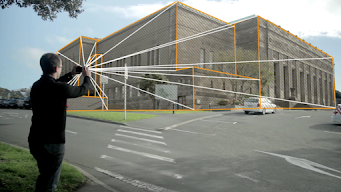Digital Technologies: Future of construction industry.
Digitalization refers to enabling or improving processes by leveraging Digital technologies & Digital Data.
In the AEC industry, construction practices were dealt with hand-drafted drawing, manual measurements & a load of paper documentation. Now this industry is entering into the digital age. Computer-Aided Design (CAD) has been used for many years & now Building Information Modeling (BIM) is changing the way projects are being delivered, Creating an efficient & sustainable built environment. There are so many technologies in the industry that are in the developing process & a few of them are brief as follows which will definitely Empower & change the productivity of the construction industry.
1. Cloud-based BIM Collaboration -
Cloud-based BIM Collaboration allows project team members to effectively work in a collaborative environment.
It allows you to Merge multiple model files and work-sets from different project partners and different design tools into one central model.
Using the cloud anyone can access information about the project at any time & any location.
Advantages of Cloud-based BIM Collaboration-1. Universal access to the data.
2. Model Coordination
3. Track & monitor the progress of a project.
4. Infinite Computation.
5. Resolving the clashes
6. Effective Communication among the personnel involved.
Softwares use for BIM Collaboration -
Autodesk BIM360, Trimble connect, Allplan Bimplus, Tekla BIMSight.
2. Virtual Reality (VR) -
Virtual Reality is a computer-based simulation of the artificial or real world, which can be experienced via special electronic equipment & sensors.
In Construction Industry, VR is used to review the real 3D environment of architectural designs.
It allows direct user interaction in virtual space that gives a clear understanding of construction.
Advantages of VR in the Construction Industry -
1. Reduces rework.
2. Improves safety.
3. Improving accessibility & Quality control.
4. Fix problems before they occur.
VR Softwares - Unity 3D, Unreal Engine, Blender.
3. Augmented Reality (AR) -
In the construction industry, AR is widely used in the commercial sector to add a single virtual piece of information to reality.
Augmented reality allows overlaying a digital image in the real world with tablets or smartphones.
AR in construction & architectural projects involve placing a 3D model of a proposed design onto an existing space using mobile devices & 3D models.
1. Real-time Visualization of projects.
2. Greater implementation of BIM.
3. Better team collaboration & communication.





Comments
Post a Comment